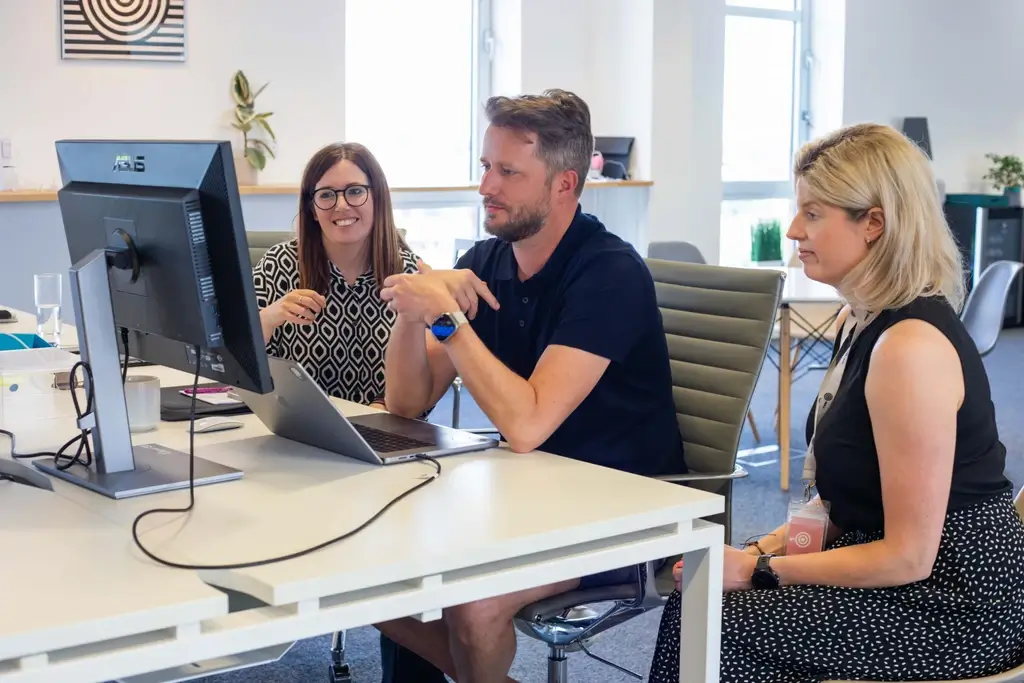Insights
Why Your Website Strategy Needs to Include Accessibility.
January 19, 2024

Written by:
Website accessibility is a hot topic at the moment – everyone’s talking about it but in practice, very few websites take it seriously enough. Talk of WCAG compliance, AAA conformance and ensuring screen readers can successfully understand your site can seem a big task to undertake, but to ignore these aspects can alienate a big proportion of your audience.
What does accessibility actually mean for a website?
It’s all about designing and developing websites in a way that ensures they can be used and understood by as many people as possible, including those with disabilities. The goal of web accessibility is to make the internet a more inclusive space, where everyone, regardless of their abilities or disabilities, can access and interact with online content.
It’s worth understanding what a disability could be, as well – thinking narrowly, you’d potentially expect it might cover someone who may be visually impaired or have issues with interacting with content, for example. However, it’s worth remembering that people can be temporarily disabled too – you might have a broken arm and find it difficult to interact with a touchscreen; you may be on a bus on a bumpy road and so find it harder to use pinpoint accuracy when selecting links, or even if you’ve had one or two too many at the office party, your ability to read long passages of text and identify calls to action might be poorer than normal. Broadening what you understand accessibility to be about therefore makes it clear to see that considering it as a priority is incredibly beneficial.
What should I consider as part of accessibility?
The list is enormous, but I’ve focused on the areas I feel most strongly about here. Accessibility shouldn’t be a list to selectively choose from, so please don’t treat this as exhaustive – but that being said, hopefully this makes you think about some implications of including them.
-
Alt Text for Images: Provide descriptive alternative text for all images. All major CMS’s will allow you to do this, and if you’re not doing it consistently, you’re probably being a bit lazy – we’ve all been there. However, doing this on each image you upload will massively help anyone using reader software understand more of what your site is about (as well as Google). No excuses, we can all do this!
-
Colour Contrast: You should maintain sufficient contrast between text and background colours throughout your website. I’m pretty severely colour-blind myself, and I can tell you that whereas automated contrast checkers are generally very good, it’s worth getting someone who’s colour-blind to do a manual check, as they rarely pick everything up. Around 4.5% of the UK population falls into this category: 8% of all men and 0.5% of women are colour-blind, so you’ll probably find a male member of your team who can help fairly easily!
-
Text Resizing, Button Size and Responsive Design: You should ensure all content remains usable when text is resized, and the website is responsive. Fairly basic when you see it, but it always surprises me how rarely both mobile and desktop views are tested in tandem when working on sites. This piece of accessibility is for everybody, not just people with specific requirements, and doing so benefits all users.
-
Video and Audio Accessibility: When adding videos to your site, it’s a great idea to include captions for videos and transcripts for audio content. Again, this isn’t just for people who may be hard of hearing or are visually impaired, as many people like to use these options on a daily basis no matter who they are. For instance, 80% of viewers are more likely to finish a video with subtitles, according to a recent study.
-
Form Accessibility: We’ve all had terrible experiences with forms. You should label form fields properly and provide helpful error messages, and ensure that error messages are clear, concise, and provide instructions on how to correct the error. Avoid vague error messages that may confuse users. There’s an art to forms, and thankfully we’ve recorded a short webinar on how to use best practice when designing forms – you can view it on demand, so no excuses.
-
Semantic Headings: Use appropriate heading tags (h1, h2, etc.) to structure content hierarchically. Not only does Google rely on this to understand what’s most important on-page, but screen readers will also benefit from good use of this structuring of on-page content.
-
Links and Buttons: Use semantic elements like <button> for interactive elements, and ensure links have clear and descriptive anchor text. Our finger pads are between 10–14mm and our fingertips are 8–10mm wide, meaning that a button size of between 42 pixels and 72 pixels is ideal, with a 72-pixel button preferred by older users, according to a study.
-
Consistent Navigation: Maintain a consistent and predictable navigation structure throughout your website. Users should be able to understand how to move around and find content easily with no changes to add confusion. Again, Google likes a consistent navigation too, so this one is another win-win.
-
Text-to-Speech Compatibility: Test your website with screen readers and other assistive technologies to ensure that they can properly interpret and convey your content to users. I’d like to share with you the most stressful video I’ve ever had the misfortune to watch – a blind gentleman who’s trying to book flights using a screen reader. It’s appalling how bad the experience is and really does make you realise that to not consider screen readers in your site design is not only to exclude users who rely on this type of software, it’s also a bit of an insult. The video is here – watch it and you’ll see what I mean.
-
User Testing: It’s great to conduct usability testing with individuals with disabilities to gather feedback and make necessary improvements. Regularly monitoring your website for accessibility issues and updating it as needed to address evolving guidelines and standards is so important, and helps with overall UX as well. Amber from our Client Services team wrote a blog on user testing recently, and there are some great points in there – give it a read.
Should I do it?
Of course – that’s the point of this Blog! At Uplift, we all truly believe in the power of having an accessible website, not only because it makes a better experience for all users, no matter what levels of ability they have, but it simply widens out the number of people who will be able to successfully be able to interact with your brand or business. 24% of the UK population had a disability in the 2021/22 financial year, so it really does make sense to consider accessibility as a priority when looking at your website.
To speak to us about accessibility, user testing, CRO, development or wider digital marketing, just drop us a message – visit our Contact Us page.
WRITTEN BY
Hayley Roberts
UX RESEARCH & DESIGN MANAGER




